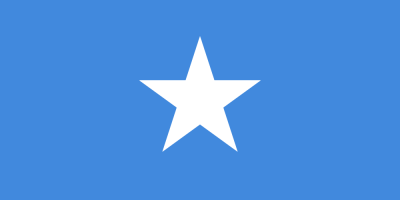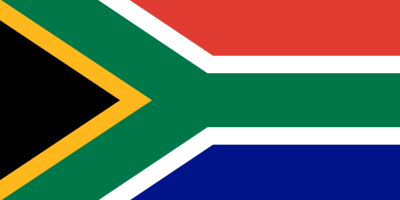Chad flag color codes is a vibrant tricolor featuring blue, yellow, and red vertical stripes. In this article, we provide the official Chad flag color codes in HTML HEX, RGB, PANTONE, HSL, CMYK, HWB, and NCOL formats. With the precise Chad flag color specifications provided here, developers, designers, and other creatives can accurately recreate and integrate the iconic colors of the Chadian flag. Whether you need the colors for a creative project, to display the flag digitally, or for any other purpose, this article gives you the HTML hex codes, RGB values, and other Chad flag color formats you need. With these official color codes for the Chad flag, you can pay respectful tribute to this central African country.
Table of Contents
What are the colors of Chad flag?
The colors of the Chad flag are:
- Blue – Represents the sky and hope
- Yellow – Represents the desert and sunlight
- Red – Represents the blood spilled for independence
The flag consists of three vertical stripes – blue, yellow, and red (from left to right).
The exact color codes are:
- Blue – HEX #00247E, RGB 0,36,126
- Yellow – HEX #FFD800, RGB 255,216,0
- Red – HEX #CE1126, RGB 206,17,38
So in summary, the three colors of the Chadian flag are blue, yellow, and red, representing sky/hope, desert/sunlight, and blood/independence respectively. The vertical tricolor pattern creates a vibrant and symbolic flag for the country.
Chad flag color codes & Color Names:
BLUE
| Color Model | Value |
|---|---|
| HTML | #0072C6 |
| HEX | 0, 114, 198 |
| RGB | rgb(0, 114, 198) |
| PANTONE | 286 C |
| HSL | hsl(206, 100%, 39%) |
| CMYK | cmyk(100%, 43%, 0%, 0%) |
| HWB | hwb(206, 0%, 22%) |
| NCOL | 2188D1 |
YELLOW
| Color Model | Value |
|---|---|
| HTML | #FFD100 |
| HEX | 255, 209, 0 |
| RGB | rgb(255, 209, 0) |
| PANTONE | 1235 C |
| HSL | hsl(48, 100%, 50%) |
| CMYK | cmyk(0%, 18%, 100%, 0%) |
| HWB | hwb(48, 0%, 0%) |
| NCOL | FFD100 |
RED
| Color Model | Value |
|---|---|
| HTML | #EF3340 |
| HEX | 239, 51, 64 |
| RGB | rgb(239, 51, 64) |
| PANTONE | 186 C |
| HSL | hsl(357, 85%, 56%) |
| CMYK | cmyk(0%, 79%, 73%, 6%) |
| HWB | hwb(357, 6%, 6%) |
| NCOL | EF3340 |
What is the meaning of colors in the Chad flag?
The colors of the Chad flag represent the following:
Blue – Represents the sky and hope. The light blue stripe on the flag symbolizes expansiveness, openness, and optimism. It reflects Chad’s reputation as the “Dead heart of Africa” and the hope for a brighter future.
Yellow – Stands for the desert and sunlight. The yellow band embodies the arid deserts of northern Chad, which cover much of the country’s landscape. It represents the harsh heat and sunshine of the Sahara.
Red – Signifies the blood spilled for independence. The red stripe remembers the sacrifices made during Chad’s fight for freedom from France in 1960. It honors those who died for Chad’s liberty.
In summary:
- Blue – Sky, hope
- Yellow – Desert, sunlight
- Red – Blood, independence
The vibrant tricolor pan-African pattern of the Chad flag conveys these symbolic meanings through color. The hues represent core connections to Chad’s national identity, struggle, and aspirations.
Explore More Flag Colors:
FAQs: Frequently Asked Questions:
What is Chad known for?
Chad, a landlocked country in north-central Africa, is known for several distinctive features:
Diverse Cultures and Ethnic Groups:
Chad is home to a variety of ethnic groups, each with its own unique culture, languages, and traditions. The major ethnic groups include the Sara, Arabs, Kanembu, and others.
Lake Chad:
The country is named after Lake Chad, one of the largest lakes in Africa. The lake has been a vital water source for the region, supporting fishing and agriculture. However, it has faced significant environmental challenges, including shrinking due to climate change.
Sahara Desert and Sahel Region:
Chad is situated in the Sahel region, experiencing both the influence of the Sahara Desert to the north and the more fertile lands to the south. This geographic diversity has shaped Chad’s climate, landscapes, and livelihoods.
Nomadic and Semi-Nomadic Lifestyle:
Many Chadians traditionally lead a nomadic or semi-nomadic lifestyle, relying on livestock herding and seasonal migrations for their livelihoods.
Historical Sites and Rock Art:
Chad boasts several archaeological and historical sites, including the Ennedi Plateau, known for its ancient rock formations and prehistoric rock art.
Political and Economic Challenges:
Chad has faced political instability and economic challenges. The country has experienced periods of conflict and civil unrest, impacting its development and stability.
Wildlife and Conservation Areas:
Despite challenges, Chad is home to diverse wildlife, including elephants, lions, and various species of antelope. Efforts are being made to protect and conserve these natural resources.
Humanitarian Aid and Refugees:
Chad has been a host to a significant number of refugees from neighboring countries, particularly from Sudan and the Central African Republic. Humanitarian organizations are active in providing aid and support to those in need.
When was Chad found?
Chad, as a modern nation-state, gained its independence from France on August 11, 1960. This means that Chad became a sovereign and independent country on that date. Prior to its independence, Chad was a French colony. The process of gaining independence was part of a broader wave of decolonization in Africa during the mid-20th century when many African nations sought and achieved independence from European colonial powers.
What is the origin of Chad?
The territory that is now Chad has a long and complex history, marked by the presence of various ethnic groups and cultures. The region has been inhabited for thousands of years, with evidence of human habitation dating back to ancient times.
Here are some key points in the historical development of the area now known as Chad:
Ancient Civilizations:
The Chad Basin, which includes parts of present-day Chad, has been home to various ancient civilizations. Archaeological evidence suggests that people have lived in the region for thousands of years.
Sao Civilization:
The Sao civilization, one of the earliest known in the region, existed around Lake Chad from the 6th century BCE to the 16th century CE. The Sao people engaged in agriculture and fishing.
Kanem-Bornu Empire:
The Kanem-Bornu Empire, centered in the Lake Chad region, was a significant political entity that emerged around the 9th century. It was known for its trading activities and cultural achievements.
European Colonization:
In the late 19th and early 20th centuries, European powers, particularly France, established colonies in Africa. Chad became part of French Equatorial Africa during this period.
Independence:
Chad gained its independence from France on August 11, 1960. This marked the establishment of the Republic of Chad as a sovereign nation-state.
Post-Independence Challenges:
The post-independence period in Chad has been marked by political instability, internal conflicts, and economic challenges. The country has faced periods of civil war and regional conflicts.
What’s the capital of Chad?
The capital of Chad is N’Djamena. N’Djamena is the largest city in Chad and serves as the political, economic, and cultural center of the country. It is located in the southwestern part of Chad, along the Chari River, near the border with Cameroon. The city was named after the Chadian river port of N’Djamena, which became the capital in 1973, replacing the former capital, Fort-Lamy.
Is Chad a poor or rich country?
Chad is generally considered to be one of the poorest countries in the world. The economy of Chad faces significant challenges, including a reliance on agriculture, vulnerability to climate shocks, political instability, and a history of internal conflicts.
Chad has struggled with poverty, underdevelopment, and a lack of basic infrastructure. The country has also faced difficulties in managing its natural resources, including oil, which, while a source of revenue, has not always translated into widespread economic development.
Is Chad a good place to live?
Chad faces numerous challenges that can impact its overall livability. Factors such as political instability, internal conflicts, economic struggles, and a harsh climate contribute to the difficulties faced by the population. Additionally, the country has significant poverty rates and lacks some of the basic infrastructure and services found in more developed nations.
It’s essential to consider various aspects when evaluating whether a place is a good location to live, including economic opportunities, political stability, healthcare, education, and overall quality of life.
What is Chad known as?
Chad is often referred to as the “Republic of Chad.” This is its official name as a sovereign nation. The country is located in north-central Africa and is landlocked, bordered by Libya to the north, Sudan to the east, the Central African Republic to the south, Cameroon and Nigeria to the southwest, and Niger to the west. The capital and largest city is N’Djamena.
What is the main job in Chad?
Agriculture is the mainstay of the economy in Chad and is a significant source of employment for the majority of the population. Many Chadians are engaged in subsistence farming, cultivating crops such as millet, sorghum, maize, and peanuts. Livestock herding is also a common occupation, particularly among nomadic and semi-nomadic communities.
Apart from agriculture, other economic activities in Chad include fishing, which is important in areas around Lake Chad, and trade. Additionally, the oil industry has become a significant contributor to Chad’s economy, providing revenue, although its benefits are not always evenly distributed among the population.













